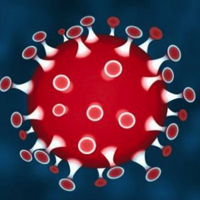Mathematical modelling of COVID-19 transmission and control strategies in the population of Bauchi State, Nigeria

All claims expressed in this article are solely those of the authors and do not necessarily represent those of their affiliated organizations, or those of the publisher, the editors and the reviewers. Any product that may be evaluated in this article or claim that may be made by its manufacturer is not guaranteed or endorsed by the publisher.
Authors
The novel SARS-COV-2 has since been declared a pandemic by the World Health Organization (WHO). The virus has spread from Wuhan city in China in December 2019 to no fewer than 200 countries as at June 2020 and still counting. Nigeria is currently experiencing a rapid spread of the virus amidst weak health system and more than 80% of population leaving on less than 1USD per day. To help understand the behavior of the virus in resource limited settings, we modelled the outbreak of COVID-19 and effects of control strategies in Bauchi state at north-eastern Nigeria. Using the real data of Bauchi state COVID-19 project, this research work extends the epidemic SEIR model by introducing new parameters based on the transmission dynamics of the novel COVID-19 pandemic and preventive measures. The total population of Bauchi State at the time of the study, given by is compartmentalized into five (5) different compartments as follows: Susceptible (S), Exposed (E), Infectious (I), Quarantined (Q) and Recovered (R). The new model is SEIQR. N = S → E → I → Q → R Data was collected by accessing Bauchi state electronic database of COVID-19 project to derive all the model parameters, while analysis and model building was done using Maple software. At the time of this study, it was found that the reproduction number R, for COVID-19 in Bauchi state, is 2.6 × 10-5. The reproduction number R decreased due to the application of control measures. The compartmental SEIRQ model in this study, which is a deterministic system of linear differential equations, has a continuum of disease-free equilibria, which is rigorously shown to be locallyasymptotically stable as the epidemiological threshold, known as the control reproduction number R= 0.0000026 is less than unity. The implication of this study is that the COVID-19 pandemic can be effectively controlled in Bauchi, since is R<1. Contact tracing and isolation must be increased as the models shows, the rise in infected class is a sign of high vulnerability of the population. Unless control measures are stepped up, despite high rate of recovery as shown by this study, infection rate will keep increasing as currently there is a no vaccine for COVID-19.
How to Cite
PAGEPress has chosen to apply the Creative Commons Attribution NonCommercial 4.0 International License (CC BY-NC 4.0) to all manuscripts to be published.

 https://doi.org/10.4081/aamr.2020.120
https://doi.org/10.4081/aamr.2020.120



